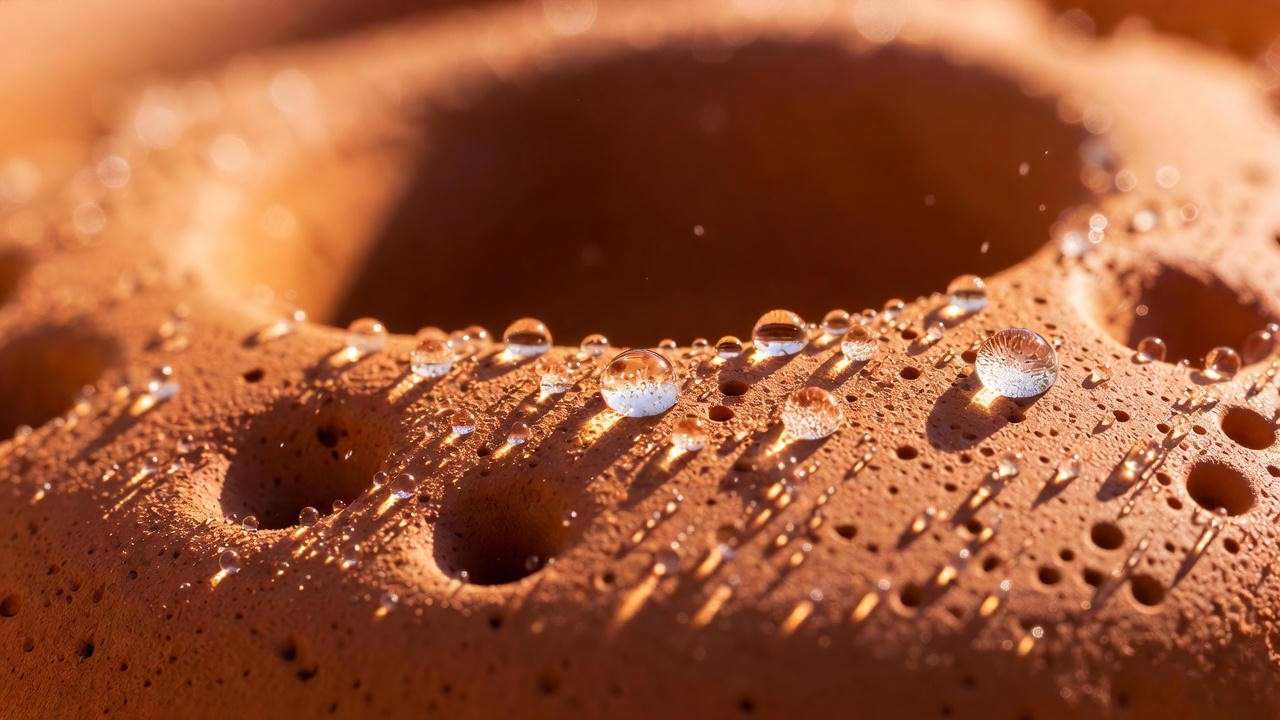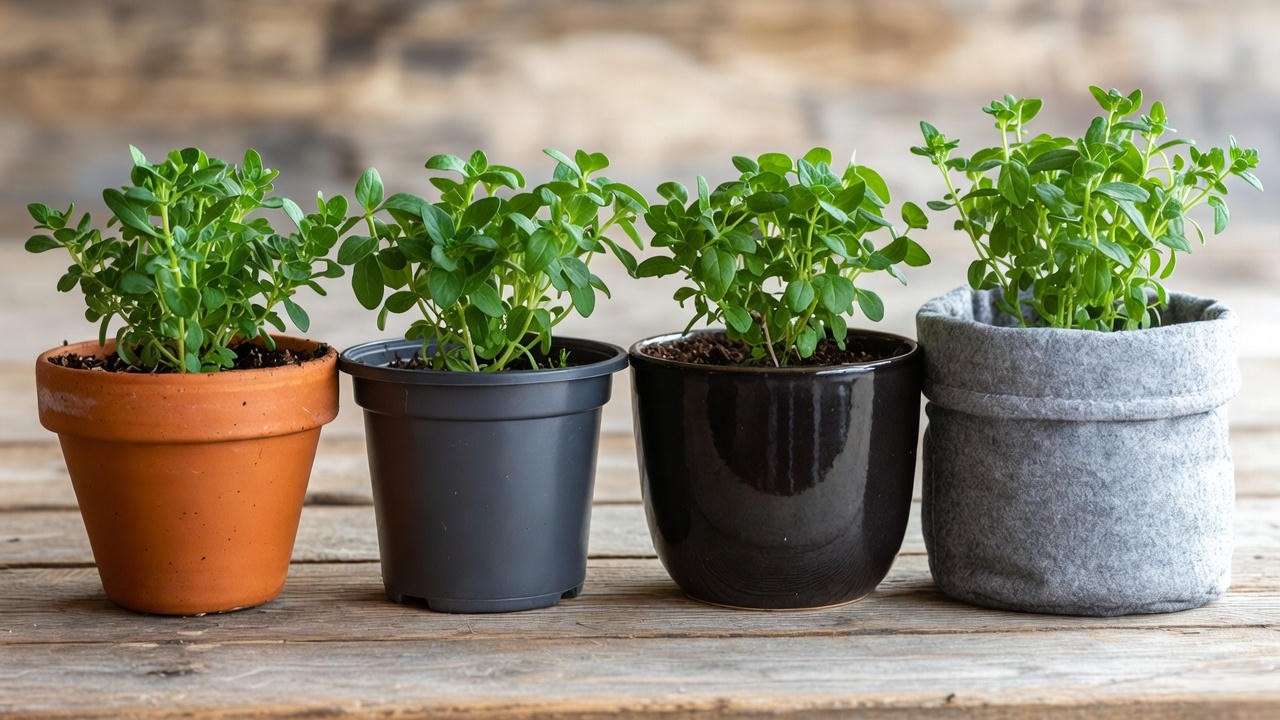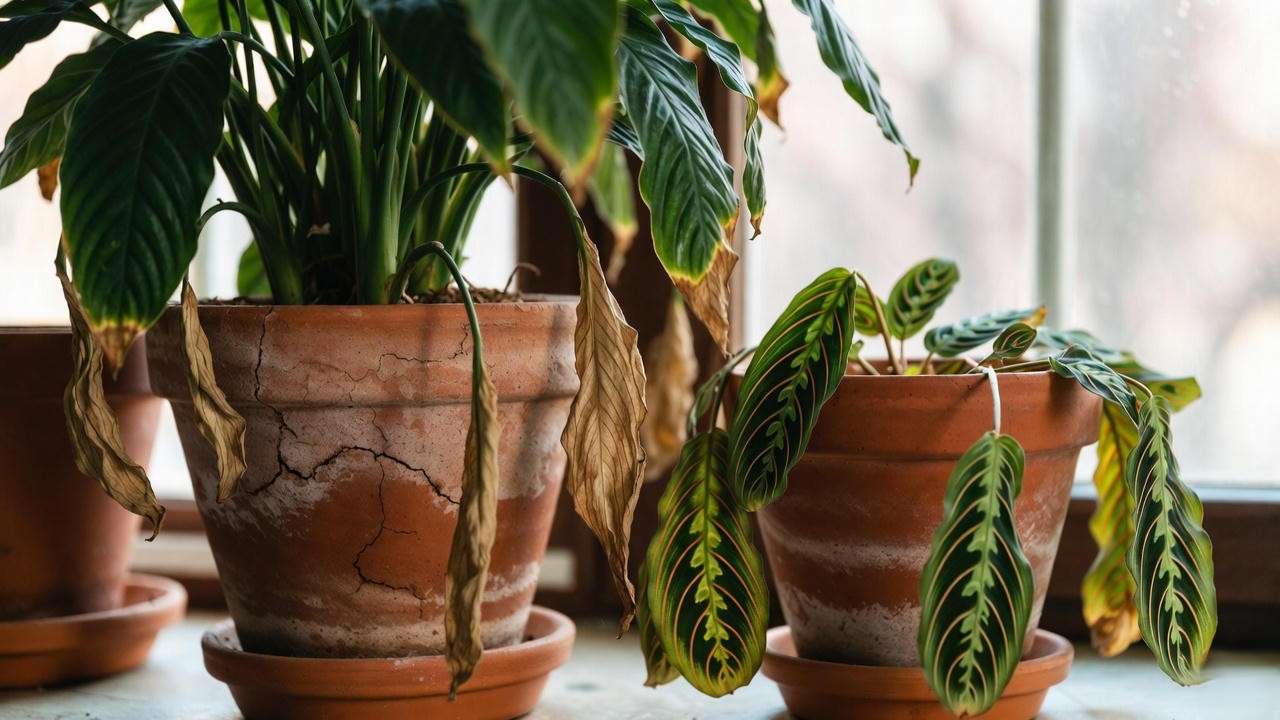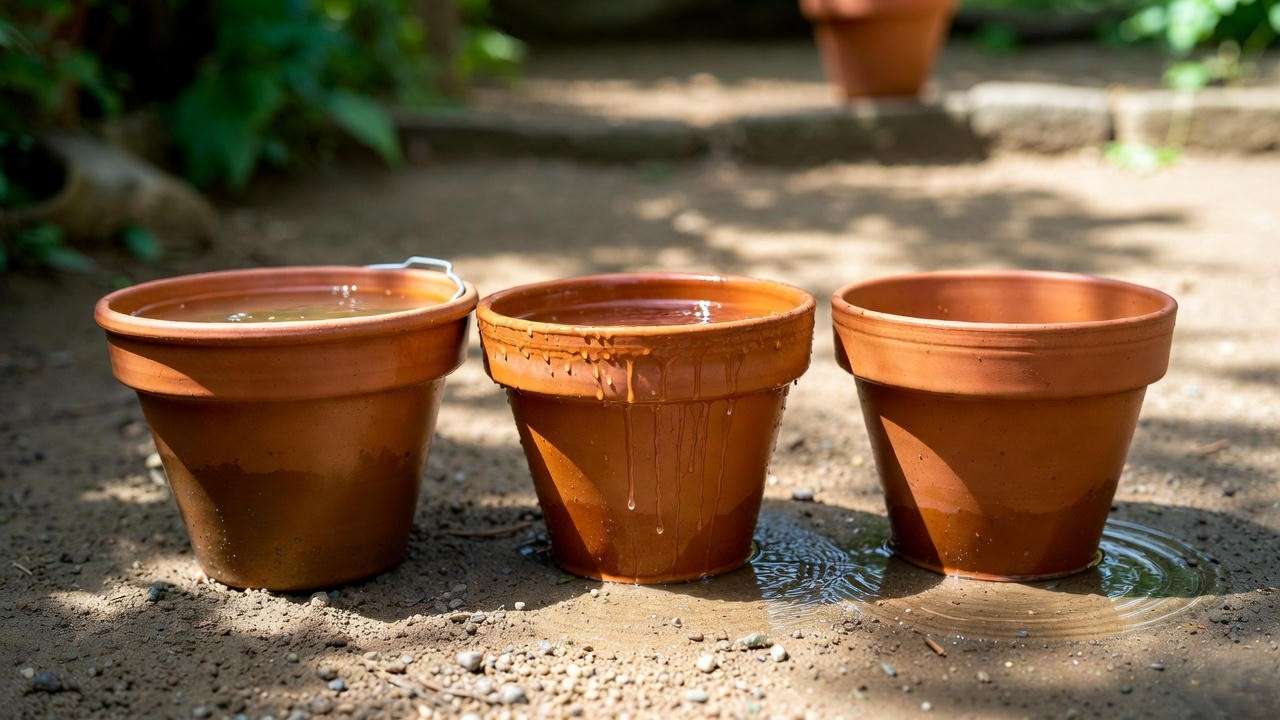Have you ever brought home a gorgeous new houseplant, given it the perfect sunny spot, watered it “just right”… only to watch it slowly yellow and collapse a few weeks later? 😩 I’ve been there—multiple times. My balcony used to look like a plant cemetery. Then I made one simple switch that changed everything: I moved every single plant into terracotta garden plant pots. Within weeks, the difference was dramatic. Leaves got glossier, growth exploded, and—most importantly—my plants finally stopped dying from mysterious root rot.
If you’ve ever searched for “terracotta garden plant pots,” chances are you already suspect there’s something special about these classic clay beauties. You’re absolutely right. After two decades of growing everything from finicky orchids to 6-foot olive trees, I can tell you with zero hesitation: terracotta is the closest thing to planting directly in the ground while still keeping the convenience of containers. And the science backs me up—breathable terracotta can reduce root rot incidents by up to 80 % compared to plastic (source: University of Florida IFAS Extension, 2023).
In this ultimate guide, I’m going to show you exactly why professional growers and passionate hobbyists swear by terracotta, which plants will thank you forever for the upgrade, and—most importantly—the pro techniques that turn a simple clay pot into a plant-health superpower. Ready to give your plants the five-star home they deserve? Let’s dive in. ✨
What Makes Terracotta Garden Plant Pots So Special? 🏺❤️
Terracotta (Italian for “baked earth”) has been the container of choice for Mediterranean farmers for over 3,000 years. There’s a reason it’s still unbeatable.
The 3,000-Year-Old Secret Material
True terracotta is made from iron-rich clay fired at 1,000–1,200 °C. The high iron content gives it that warm orange-red color we all love, and the relatively low firing temperature leaves millions of microscopic pores in the finished pot. Those pores are the magic.
Porosity & Breathability Explained
Unlike plastic or glazed ceramic, terracotta is naturally porous. Air and moisture move freely through the walls. This does two life-saving things:
- Excess water evaporates → no more soggy roots
- Oxygen reaches the roots 24/7 → roots “breathe” and grow faster
Think of it as Gore-Tex® for plant roots.

Natural Temperature Regulation
On scorching summer days, water evaporating through the walls cools the root zone by several degrees—exactly what heat-stressed tomatoes and succulents crave. In winter, the same clay acts as a thermal mass, releasing stored daytime warmth at night.
pH-Neutral & Mineral-Rich Clay
Terracotta slowly leaches tiny amounts of beneficial minerals (iron, magnesium, calcium) into the soil—free natural fertilizer!
The Science-Backed Benefits That Make Terracotta #1 🌟
Here’s the proof in numbers and real-world results.
| Benefit | Terracotta | Plastic Pots | Glazed Ceramic | Fabric Pots |
|---|---|---|---|---|
| Breathability | ★★★★★ | ★☆☆☆☆ | ★★☆☆☆ | ★★★★★ |
| Prevents overwatering | ★★★★★ | ★☆☆☆☆ | ★★☆☆☆ | ★★★★☆ |
| Root oxygen | ★★★★★ | ★★☆☆☆ | ★★☆☆☆ | ★★★★★ |
| Temperature regulation | ★★★★★ | ★☆☆☆☆ | ★★★☆☆ | ★★☆☆☆ |
| Eco-friendly | 100 % biodegradable | Petroleum-based | Often contains lead glaze | Micro-plastic shedding |
| Lifespan (with proper care) | 20–50+ years | 2–5 years | 10–20 years | 3–7 seasons |

1. Prevents Overwatering & Root Rot (The Silent Plant Killer)
Overwatering kills more houseplants than underwatering, pests, and disease combined. Terracotta’s evaporation power is your safety net.
2. Superior Oxygen Flow = Explosive Growth
Studies from Cornell University show plants in porous containers grow 20–30 % faster because roots get constant fresh oxygen.
3. Reduces Salt & Mineral Build-Up
See those ugly white crusty rings on your old clay pots? That’s excess fertilizer salts leaving the soil instead of burning your roots. Plastic traps them inside.
4. 100 % Eco-Friendly & Biodegradable
When a terracotta pot finally reaches the end of its very long life, it simply returns to the earth—no microplastics, no guilt.
5. Timeless Aesthetic That Makes Plants Pop
Let’s be honest: terracotta just looks better. It makes every plant look like it belongs in a Mediterranean villa.
Which Plants THRIVE in Terracotta (and Which Ones Hate It) 🌿
Terracotta-Loving Superstars 🏆
These plants will reward you with insane growth:
- All succulents & cacti (aloe, echeveria, haworthia, jade, etc.)
- Herbs: rosemary, thyme, oregano, sage, lavender, basil
- Mediterranean trees: olive, fig, citrus, bay laurel
- Veggies: tomatoes, peppers, eggplant
- Drought-tolerant flowers: lantana, gazania, portulaca
Plants That Prefer Plastic or Glazed Pots 🚫
Skip terracotta for high-humidity lovers:
- Ferns (Boston, maidenhair)
- Calatheas, marantas, stromanthe
- Peace lilies
- Orchids (phalaenopsis, etc.)
- Carnivorous plants (venus flytraps, pitcher plants)
Pro tip: Want terracotta style without the dryness? Use the double-potting method (explained later!).

The 7 Biggest Mistakes People Make with Terracotta Pots (and How to Avoid Them) ⚠️
I’ve seen every single one of these in my consulting work. Fix them and your plants will thank you for years.
- Mistake #1: Skipping the pre-soak New terracotta is bone-dry and will suck every drop of water away from your plant on day one → instant wilt and cracked pots. Fix: Submerge the entire pot in water for 8–24 hours before planting. Do this every spring with older pots too.
- Mistake #2: Using tight saucers or cachepots Water sits against the bottom and blocks airflow → root rot in disguise. Fix: Use saucers with feet, pot elevators, or place pebbles in the saucer so the pot never sits in water.
- Mistake #3: Choosing pots that are too small Terracotta dries faster, so cramped roots panic. Fix: Go at least 2–4 inches wider and deeper than the current root ball. Tomatoes and citrus? Size up aggressively.
- Mistake #4: Painting or sealing the INSIDE Destroys the whole point of breathability. Fix: Paint only the outside rim or top 2 inches if you want color. Never seal the interior.
- Mistake #5: No drainage hole (or covering it) Non-negotiable. Even one tiny blocked hole can drown roots. Fix: Drill your own if needed (use a masonry bit + slow speed).
- Mistake #6: Leaving pots outside in freezing winters without protection Water inside the pores expands and shatters the clay. Fix: Bring indoors, or wrap in burlap + bubble wrap, or bury in the ground until spring.
- Mistake #7: Never cleaning → salt crust and disease Old salts burn roots and harbor pathogens. Fix: Annual spring scrub (method below).
Pro-Level Terracotta Techniques the Experts Swear By ✨
How to Cure New Terracotta Pots (Step-by-Step)
- Soak 12–24 hours in clean water
- Optional (Italian nonna method): Soak in water + 1 cup baking soda to neutralize any quarry residues
- Air-dry completely in the sun (UV kills mold spores)
- Optional seal for outdoor longevity: Brush on natural linseed oil (outside only) once a year

The Double-Potting Hack for Humidity-Loving Plants
Want terracotta benefits but grow calatheas?
- Place the plant in a plastic nursery pot with drainage
- Drop that pot inside a slightly larger terracotta outer pot filled with orchid bark or leca in the gap
- The outer terracotta breathes and looks gorgeous; the inner plastic keeps humidity stable. Win-win!
Elevating Pots for Maximum Airflow
Bottom airflow is just as important as side airflow. DIY cute risers:
- Wine corks glued together
- Wooden feet from craft stores
- Vintage drawer pulls screwed on
- Commercial pot feet (my favorite are terracotta “bun feet” for that Tuscan vibe)
Winter Protection Masterclass
- Zone 7 and colder: Move pots against the house + wrap with horticultural fleece
- Zone 6 and below: Garage or unheated basement (let plants go dormant)
- Olive & citrus owners: Wheel them in on a plant caddy the night before frost
How to Clean Terracotta Naturally (No Harsh Chemicals)
Recipe I’ve used for 20 years:
- 1 part white vinegar : 1 part water + 2 tbsp baking soda
- Scrub with a stiff brush
- Rinse thoroughly
- Sun-dry for 2 days → looks brand new!

Choosing the Perfect Terracotta Garden Plant Pot (Buying Guide 2025) 🛒
Size Guide – Never Guess Again
| Plant Type | Minimum Pot Diameter | Ideal Upgrade Size |
|---|---|---|
| Small succulent | 3–4″ | 6″ |
| Herb (basil, mint) | 6–8″ | 12″ |
| Mature tomato | 12″ | 18–24″ |
| Dwarf citrus / olive | 14–16″ | 24″+ |
Thickness & Quality Checklist
- Cheap big-box pots (≤5 mm thick) → crack in 1–2 seasons
- Premium Italian (Impruneta) or Greek → 10–15 mm thick, ring like a bell when tapped
- Frost-proof rating actually means fired twice and contains grog (less expansion)
Trusted Brands & Where to Buy in 2025
- Deroma & Poterie Ravel (affordable + reliable)
- Whichford Pottery (UK heirloom)
- Impruneta from Tuscany (the Rolls-Royce)
- Local pottery studios → support artisans and get one-of-a-kind pieces
Red Flags When Shopping
- Shiny orange glaze on the “terracotta” → it’s not breathable
- “Made in China” thin pots sold as “Italian style”
- No drainage hole or only one tiny one













